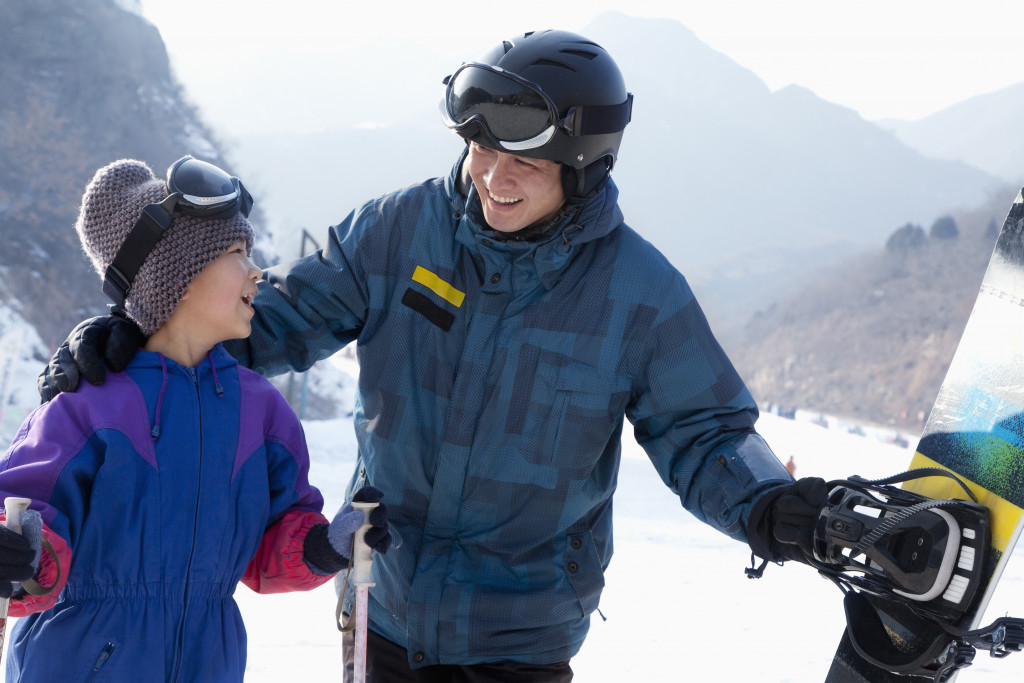Skiing is fun and even beneficial to health until you realize that, like other activities, it comes with risks. Now that winter is just around the corner, there’s no better time to condition your body for this outdoor hobby than today.
You can begin by knowing what injuries to watch out for. We’ll divide this into two: injuries due to impact and movement and hypothermia.
What Is the Most Common Skiing Injury?
The most common ski-related injuries (and non-fatalities) come in at around 21 percent for men and 12 percent for women. These are usually to the lower leg/ankle area due to falls onto outstretched legs. Usually, it happens when you catch an edge on a turn, resulting in falls with the full weight of your body bearing down on the ankle/legs. Also, significant are deep tissue-related injuries such as sprains, bruising, lacerations, and abrasions.
By far, the biggest percentage is broken bones, which is understandable. According to many experts, many people ski even if they are not in good shape to do it. Worse, they try doing it in an expert slope. The end result includes muscles and nerves not prepared to handle the complexity of movements and even the cold weather. A fall here can result in broken shoulder blades and collarbones, as well as torn ligaments.
The most dangerous skiing injuries are those to the head, resulting in concussions or life-threatening brain injuries. A 2017 research shared that head injuries are the leading cause of mortality for those who participate in downhill skiing.
The second (and closely associated) category is spinal injuries, usually resulting from falls onto the lower back with full body weight bearing down on top of it. These types of injuries can cause paralysis or permanent disability.
What Is Hypothermia?

Although not exactly a body injury, hypothermia remains one of the biggest problems for skiers. In fact, it’s the primary reason that men and women should wear the right winter gear when on the slopes. The Acertyx ski jacket for men, for example, uses a warm material to retain as much body heat as possible while still providing the best mobility.
But what is hypothermia exactly? It happens when the body loses heat faster than it can produce heat. It occurs when a person’s core body temperature drops below 95 degrees Fahrenheit (35 Celsius).
It affects people of all ages. Older people are especially vulnerable because they cannot regulate their body temperature well.
How does it occur? As your body loses heat, it also loses energy, causing a number of chemical imbalances in the body that can cause serious complications or death.
Thermal conductivity is the ability of a material to conduct heat. Water has a very high thermal conductivity and will result in hypothermia way faster than air at the same temperature and wind speed. Basically, anything that inhibits your body’s natural defenses against lowering internal core temperature, such as wet clothing, can increase the risk of hypothermia.
Hypothermia also happens most often when a person is outdoors in cold weather or immersed in cold water for extended periods. Other factors, such as fatigue, alcohol consumption, low body fat, and physical conditioning can contribute to hypothermia in people who otherwise appear to be adequately dressed for the weather.
How Dangerous Is Hypothermia?
Hypothermia causes your body tissues to become very cold, eventually slowing down organ functions and eventually leading to death if not treated promptly. As your body temperature drops, chemical reactions in the brain slow down. This affects parts of your brain responsible for reasoning and thinking, which get confused by the lack of oxygen supply.
The following are warning signs that you or someone you know is suffering from hypothermia:
- Slurred speech
- Impaired reasoning or confusion (may appear as uncooperative or irrational behavior)
- Lack of coordination (ataxia)
- Poor control over movements
- Staggering gait
- Stumbling
When you suffer from hypothermia, you will begin to shiver because the body is trying to warm up. A person with mild hypothermia will also have cold and pale skin and feel tired.
As the condition worsens, you will experience confusion, weakness, and slowed breathing. You will also stop shivering despite the low body temperature. If not treated immediately, severe hypothermic symptoms include loss of consciousness, changes in heart rate, and failure of other organ systems.
Skiing is a great outdoor activity, especially if you’re doing it with friends. But it’s not for someone who cannot heed caution. The best skiers should always look for ways to improve their performance without forgetting about safety.

